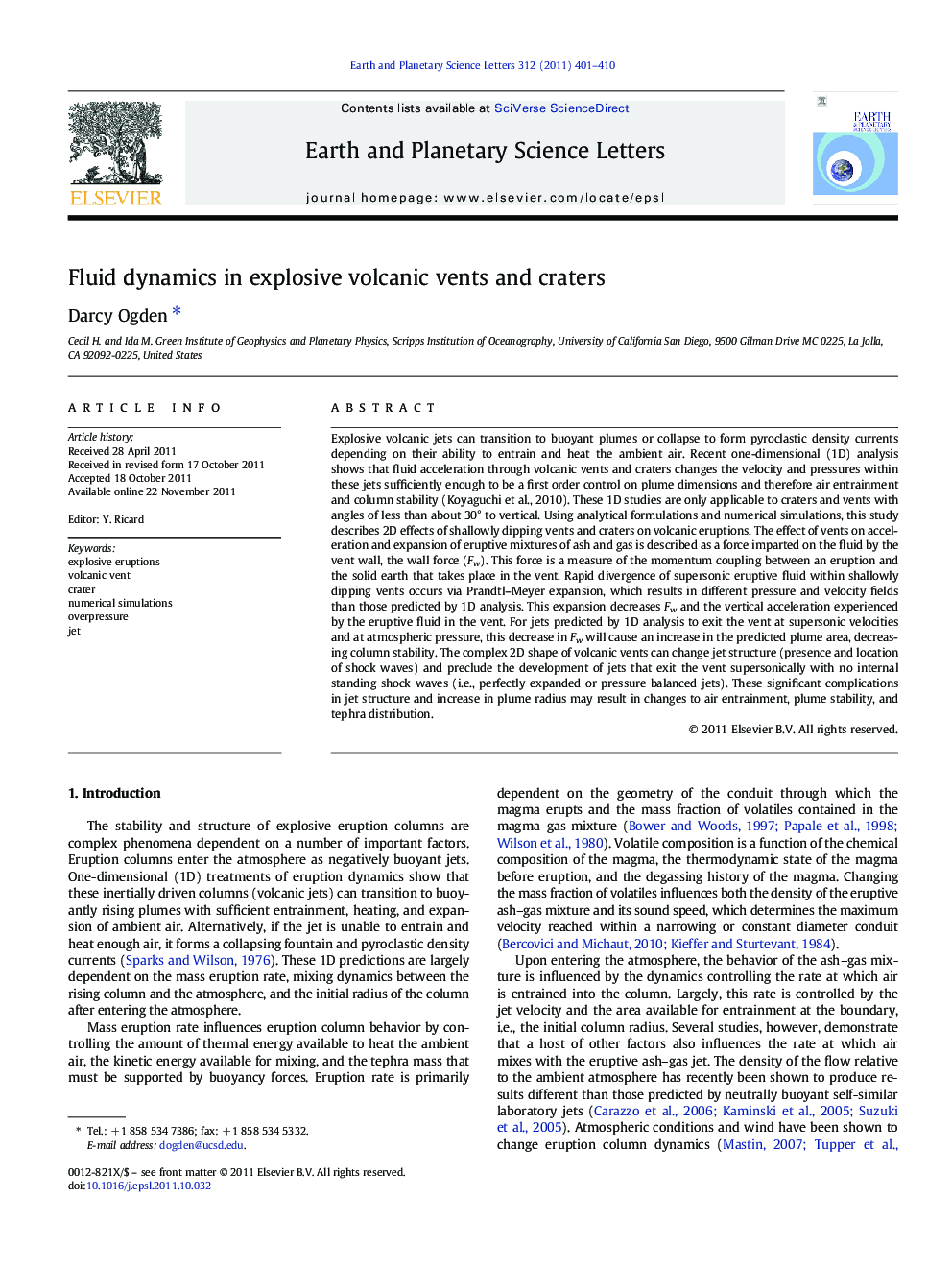| کد مقاله | کد نشریه | سال انتشار | مقاله انگلیسی | نسخه تمام متن |
|---|---|---|---|---|
| 4677711 | 1634815 | 2011 | 10 صفحه PDF | دانلود رایگان |

Explosive volcanic jets can transition to buoyant plumes or collapse to form pyroclastic density currents depending on their ability to entrain and heat the ambient air. Recent one-dimensional (1D) analysis shows that fluid acceleration through volcanic vents and craters changes the velocity and pressures within these jets sufficiently enough to be a first order control on plume dimensions and therefore air entrainment and column stability (Koyaguchi et al., 2010). These 1D studies are only applicable to craters and vents with angles of less than about 30° to vertical. Using analytical formulations and numerical simulations, this study describes 2D effects of shallowly dipping vents and craters on volcanic eruptions. The effect of vents on acceleration and expansion of eruptive mixtures of ash and gas is described as a force imparted on the fluid by the vent wall, the wall force (Fw). This force is a measure of the momentum coupling between an eruption and the solid earth that takes place in the vent. Rapid divergence of supersonic eruptive fluid within shallowly dipping vents occurs via Prandtl–Meyer expansion, which results in different pressure and velocity fields than those predicted by 1D analysis. This expansion decreases Fw and the vertical acceleration experienced by the eruptive fluid in the vent. For jets predicted by 1D analysis to exit the vent at supersonic velocities and at atmospheric pressure, this decrease in Fw will cause an increase in the predicted plume area, decreasing column stability. The complex 2D shape of volcanic vents can change jet structure (presence and location of shock waves) and preclude the development of jets that exit the vent supersonically with no internal standing shock waves (i.e., perfectly expanded or pressure balanced jets). These significant complications in jet structure and increase in plume radius may result in changes to air entrainment, plume stability, and tephra distribution.
► Vent wall force (Fw) describes host rock and eruptive fluid coupling.
► 1D vent solutions can be modified to consider 2D vent shape effects.
► Many natural vents inhibit formation of perfectly expanded jets.
► Increased flow divergence in vents decreases acceleration, increases plume area.
► 2D effects on expansion in vents alter plume stability and structure.
Journal: Earth and Planetary Science Letters - Volume 312, Issues 3–4, 15 December 2011, Pages 401–410